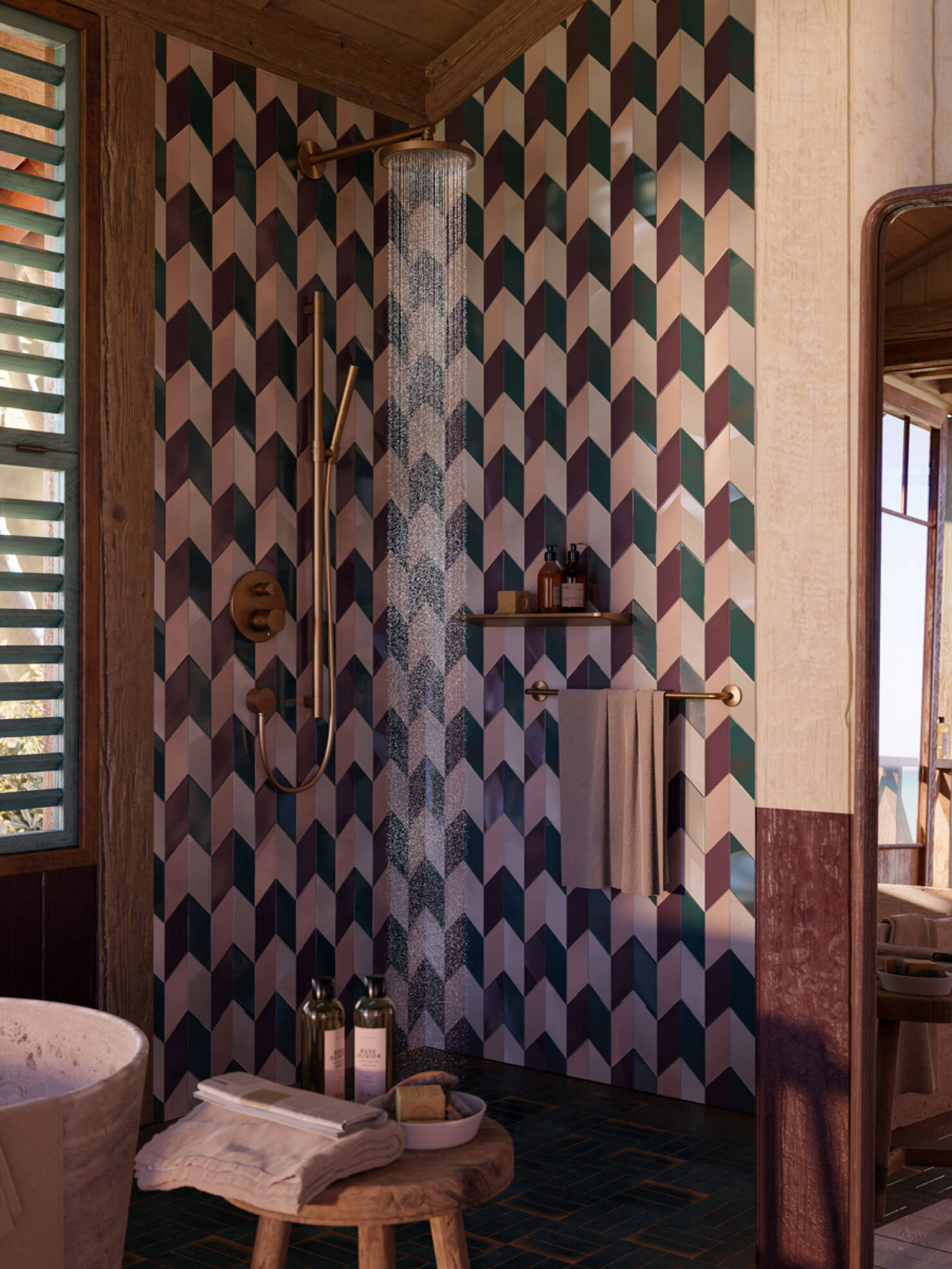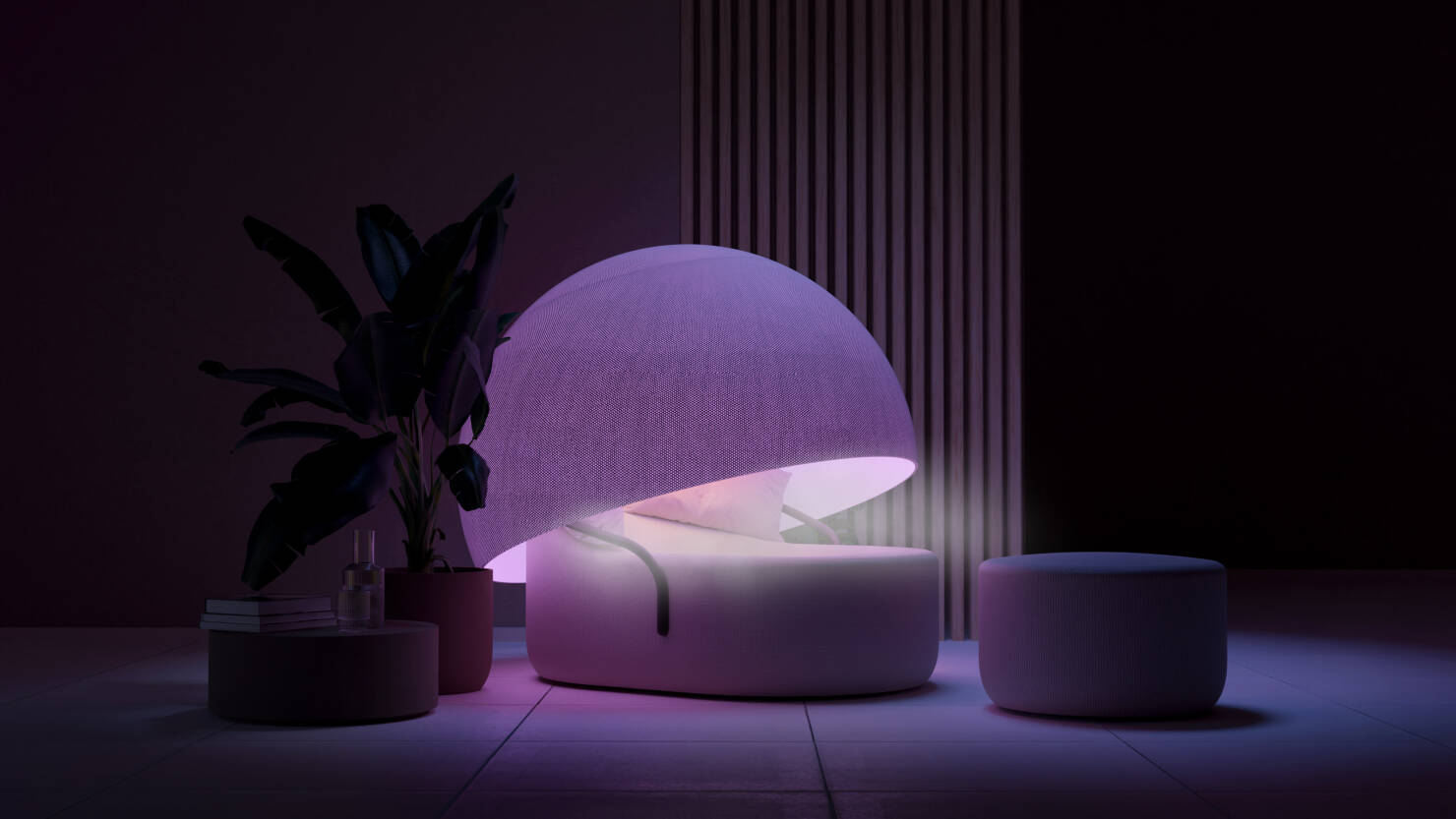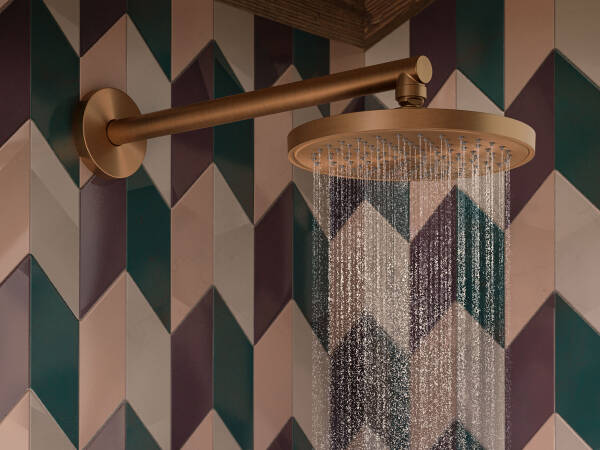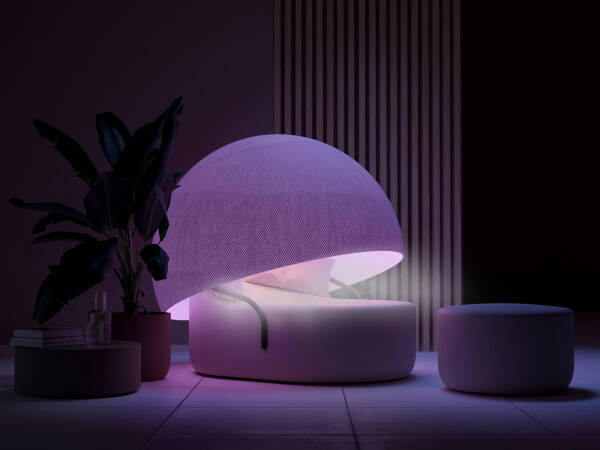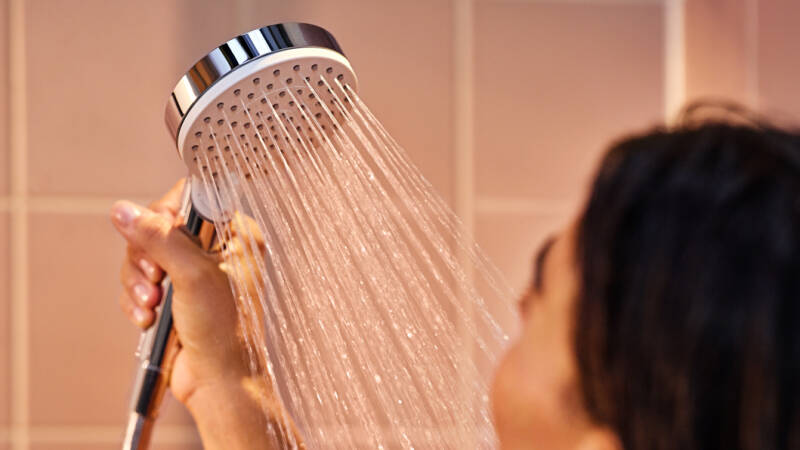Sustainable Products for the Bathroom and the Kitchen
We see product innovations as a driving force to achieve far more than economic success. The Hansgrohe Group develops solutions that serve to protect the environment. With a spirit of innovation, we address concrete problems such as the lack of resources, be it the looming water crisis or the shortage of production materials. We have defined ten EcoDesign principles for all our products. Our goal for 2030: reduce water consumption, cut emissions – with water and energy-saving technologies in all AXOR and hansgrohe branded products.
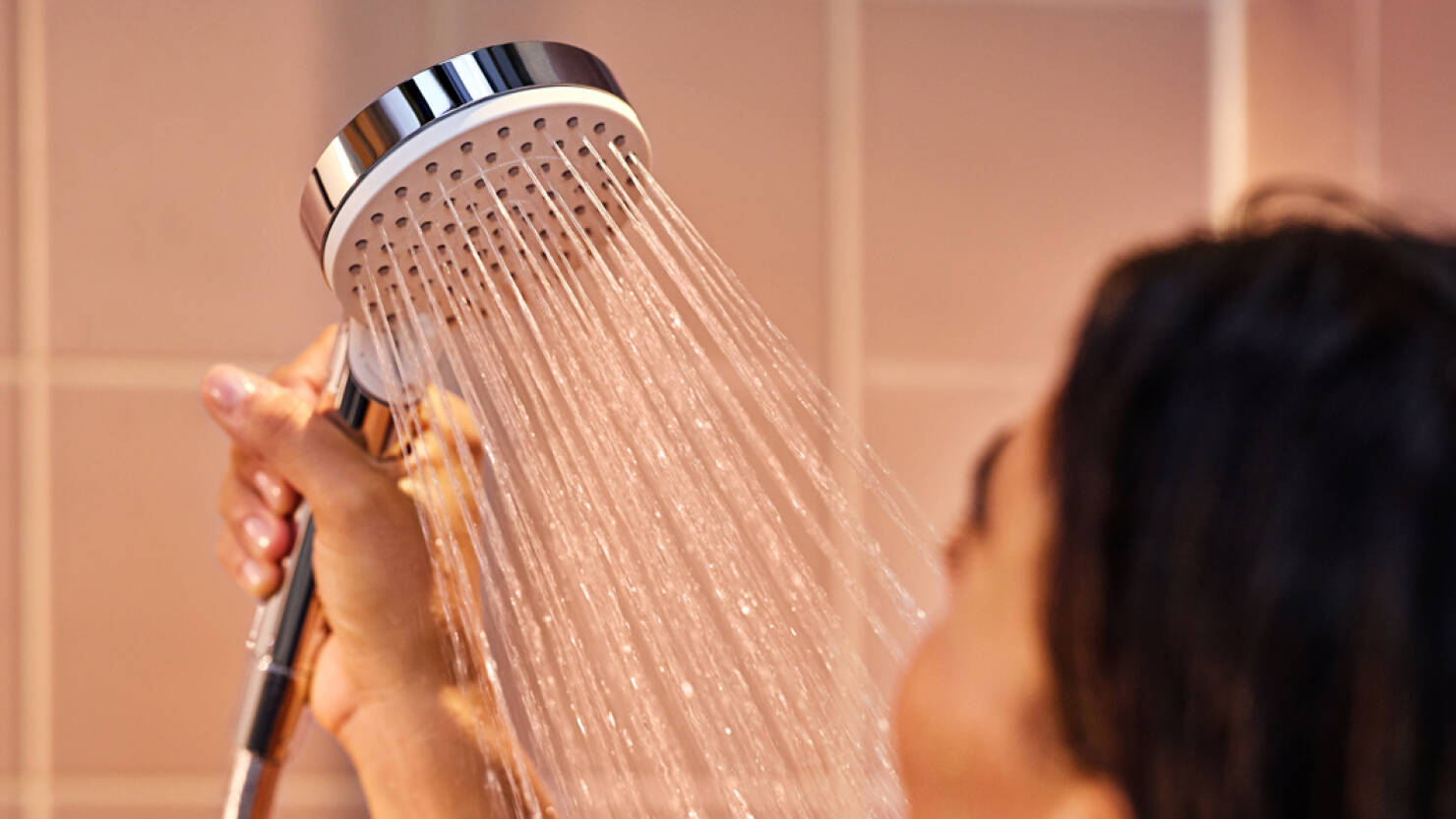
We Manufacture Sustainable Products for Bathroom and Kitchen – According to the ECO Principle
As a leading manufacturer of showers, shower systems, faucets, and kitchen sinks, we can do our part to protect the climate. And we do. We have formulated eco-design guidelines for all our AXOR and hansgrohe branded products.
The aim of these principles is to consistently align our products with ECO*. We strive to develop, design and manufacture our products entirely with sustainability in mind.
The measures resulting from this aspiration will be extensive. As a company, we must therefore proceed step by step and continuously keep our eye on the ball. For example, we already fulfill some of these principles today, while others are to be understood as target states that guide our path to 2030.
Our ECO Design Principles:
-
Planet-centered Innovations
With carefully thought-through innovations, our products overcome the limitations of the status quo. As a result, we set new benchmarks in minimizing negative environmental impact, while maximizing comfort.
-
Less Water, Less Energy, Less Costs
Our products only use water when it is necessary. At the same time, they are designed to ensure maximum comfort with reduced water usage.
-
Energy-Saving Mode On
Our products use energy-saving and efficient technologies. The energy required for heating the water in the usage phase is minimized by reduced (hot) water volumes, among other things. Electronic and digital functions of the products are provided in an energy-efficient manner.
-
Long Product Lives
The design and construction of our products is timeless and made to last. Any maintenance or repairs can be carried out easily and without special tools. In order to extend the products‘ service life, they are designed so that they can be technically and visually updated.
-
Closing the Cycle
Our products are completely separable by type. The exclusively recyclable components are returned to the material cycle. This is done via recycling by the customer or via a product take-back with subsequent remanufacturing/recycling by Hansgrohe.
-
Less Material
Our products are material-efficient, which means they consist of as little raw material as possible. Environmental properties play a central role in material selection. Previously used materials are replaced by more sustainable alternatives. Our products do not use inseperable composites or material mixes.
-
Less Complexity
Our products consist of components and parts that can be used universally across the portfolio. This reduces complexity and costs. Innovative design languages are realized via very few new parts.
-
Less Coating
Our products consist of components and parts that can be used universally across the portfolio. This reduces complexity and costs. Innovative design languages are realized via very few new parts.
-
Staying Clean
Our products consist of components and parts that can be used universally across the portfolio. This reduces complexity and costs. Innovative design languages are realized via very few new parts.
-
Awareness Guides Behavior
Our products consist of components and parts that can be used universally across the portfolio. This reduces complexity and costs. Innovative design languages are realized via very few new parts.
We Get Serious: Implementing the ECO Principles Using Water as an Example
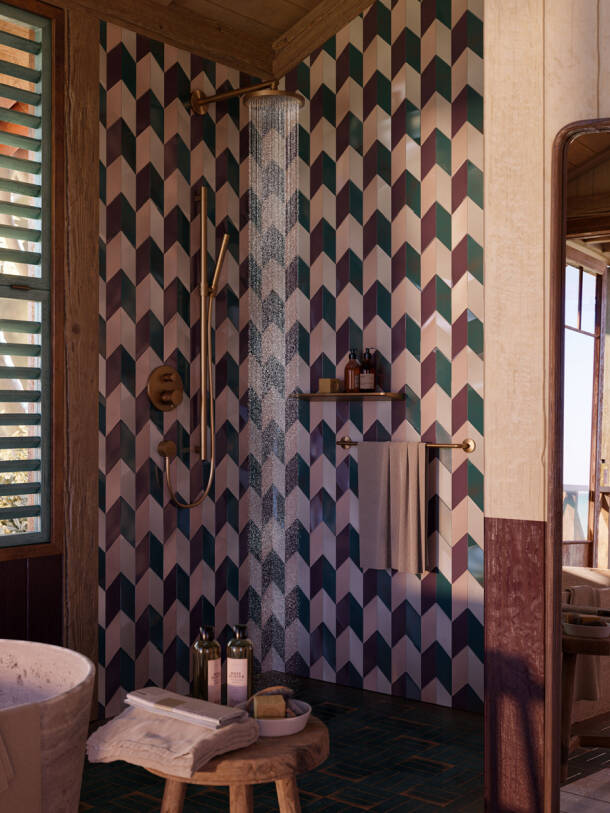
Just how ambitiously we as a company pursue our sustainability guidelines is exemplified by the principle of "less water, less energy, lower costs."
Many of us use it every day, whether taking a shower in the bathroom in the morning or washing dishes in the kitchen sink: hot water. For hot water to come out of the pipes, energy is needed. The water must be heated. Conventional energy sources such as natural gas and coal are usually still used for this purpose. This has disadvantages, such as high CO2e emissions.
Less Hot Water, Less CO2e Emissions
The use of a lot of hot water in kitchens and bathrooms generates large energy requirements and thus high CO2e emissions. This is where we need to make improvements. This is the only way to protect the climate. This is where the Hansgrohe Group, as a manufacturer of faucets and showerheads, comes into play: We want to reduce the need for hot water. This is one of our most important sustainability goals. After all, reducing the water consumption of our products has extensive positive effects for the climate:
The less water our products consume during their many years of use in the bathroom and kitchen, the lower the energy consumption and CO2e emissions.
This is also proven by the Hansgrohe Group's bathroom analysis.
Right Down the Line: All Products Equipped with Sustainable Technologies by 2030
At Hansgrohe, we follow up findings such as those from our bathroom analysis with action, and so we are converting our entire portfolio of faucets and showerheads to ECO* by 2030. This is a plan that we will implement consistently over the next few years. In concrete terms, this means that by 2030, all water-carrying AXOR and hansgrohe products will be available exclusively with water- and energy-saving technologies.
Already today, our EcoSmart technology equipped products reduce water and energy consumption by up to 60 percent.
* The Hansgrohe Group defines "ECO" as the reduction of water and/or energy consumption of water-bearing products in use by at least 22 percent compared to the base year 2020
Then and Now: Hansgrohe Shapes the Future with a Green Mindset
Innovation is a tradition at the Hansgrohe Group – just like our green mindset. Thus, the eco-design guidelines find their anchor points in our product history:
- In 1987, the path of green transformation began with the Mistral Eco hand-held shower. It made it possible to save 50 percent water when showering.
- This was followed in 2007 by the water-saving EcoSmart technology.
EcoSmart reduces water consumption when showering, washing hands or doing the dishes with the help of a flow limiter: less water per minute flows through the faucet or showerhead. An aerator built into the spout of the basin faucet ensures a pleasant water experience.
- Since 2012, numerous faucets have been equipped with CoolStart technology.
Only cold water flows through these faucets when the washbasin handle is in the middle position – instead of hot water, which may not be needed at that moment and is therefore wasted. This reduces energy consumption and thus electricity or gas costs. At the same time, CO2e emissions are reduced.
- In 2019, we introduced PowderRain, a water-saving spray consisting of thousands of microfine drops that gently envelop the body in a cloud of water.
The Path to a Low-Emission Bathroom
Hansgrohe has always been a forward-looking company – ever since it was founded in 1901. We hold true to this and also think ahead when it comes to sustainability.
Together with the Stuttgart-based design and innovation studio PHOENIX, we have developed a a concept of a bathroom in harmony with people and nature:
Hansgrohe's Green Vision beyond Water: Rethinking Bathroom Culture.

